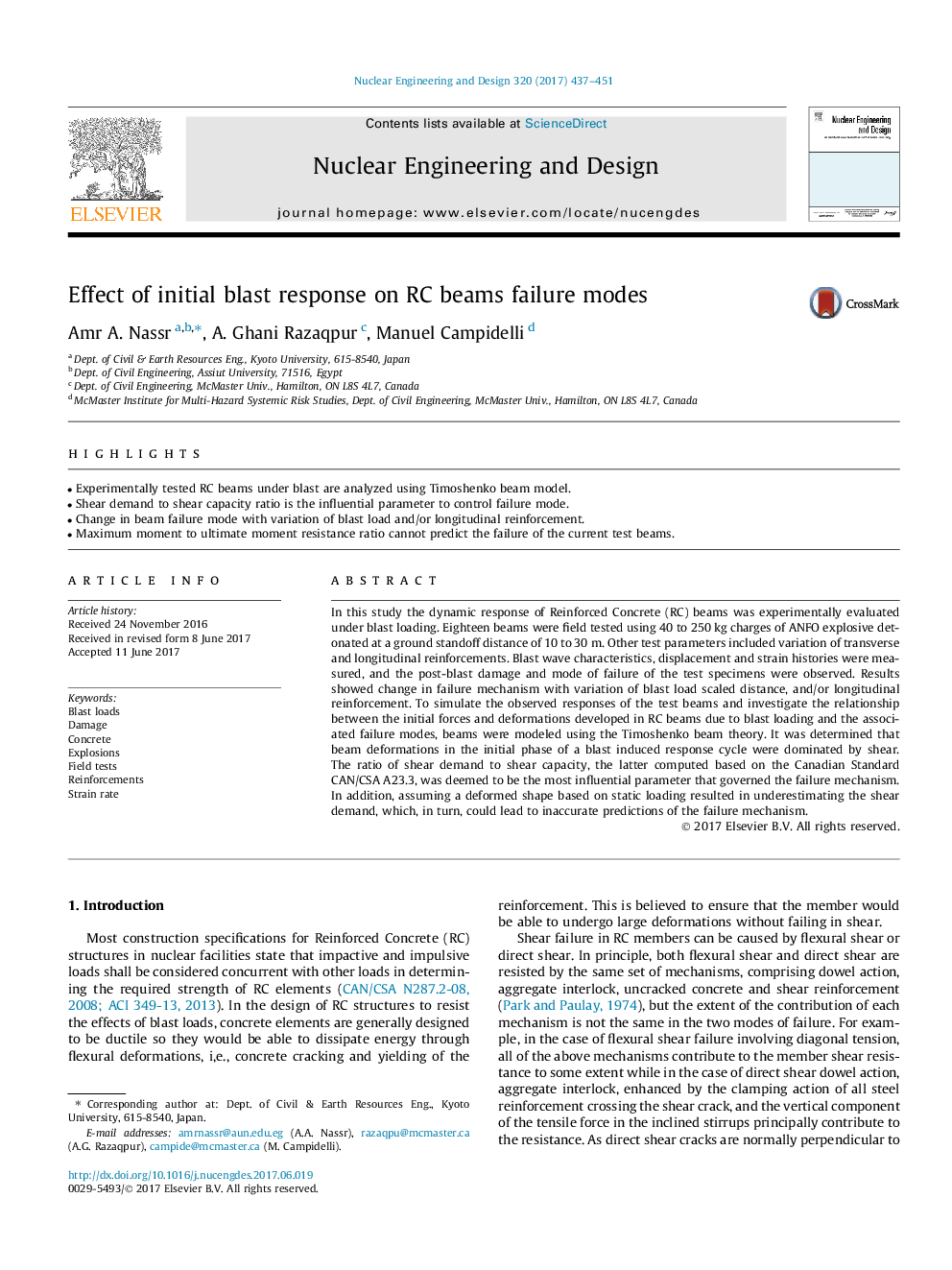| Article ID | Journal | Published Year | Pages | File Type |
|---|---|---|---|---|
| 4925391 | Nuclear Engineering and Design | 2017 | 15 Pages |
Abstract
In this study the dynamic response of Reinforced Concrete (RC) beams was experimentally evaluated under blast loading. Eighteen beams were field tested using 40 to 250Â kg charges of ANFO explosive detonated at a ground standoff distance of 10 to 30Â m. Other test parameters included variation of transverse and longitudinal reinforcements. Blast wave characteristics, displacement and strain histories were measured, and the post-blast damage and mode of failure of the test specimens were observed. Results showed change in failure mechanism with variation of blast load scaled distance, and/or longitudinal reinforcement. To simulate the observed responses of the test beams and investigate the relationship between the initial forces and deformations developed in RC beams due to blast loading and the associated failure modes, beams were modeled using the Timoshenko beam theory. It was determined that beam deformations in the initial phase of a blast induced response cycle were dominated by shear. The ratio of shear demand to shear capacity, the latter computed based on the Canadian Standard CAN/CSA A23.3, was deemed to be the most influential parameter that governed the failure mechanism. In addition, assuming a deformed shape based on static loading resulted in underestimating the shear demand, which, in turn, could lead to inaccurate predictions of the failure mechanism.
Related Topics
Physical Sciences and Engineering
Energy
Energy Engineering and Power Technology
Authors
Amr A. Nassr, A. Ghani Razaqpur, Manuel Campidelli,
